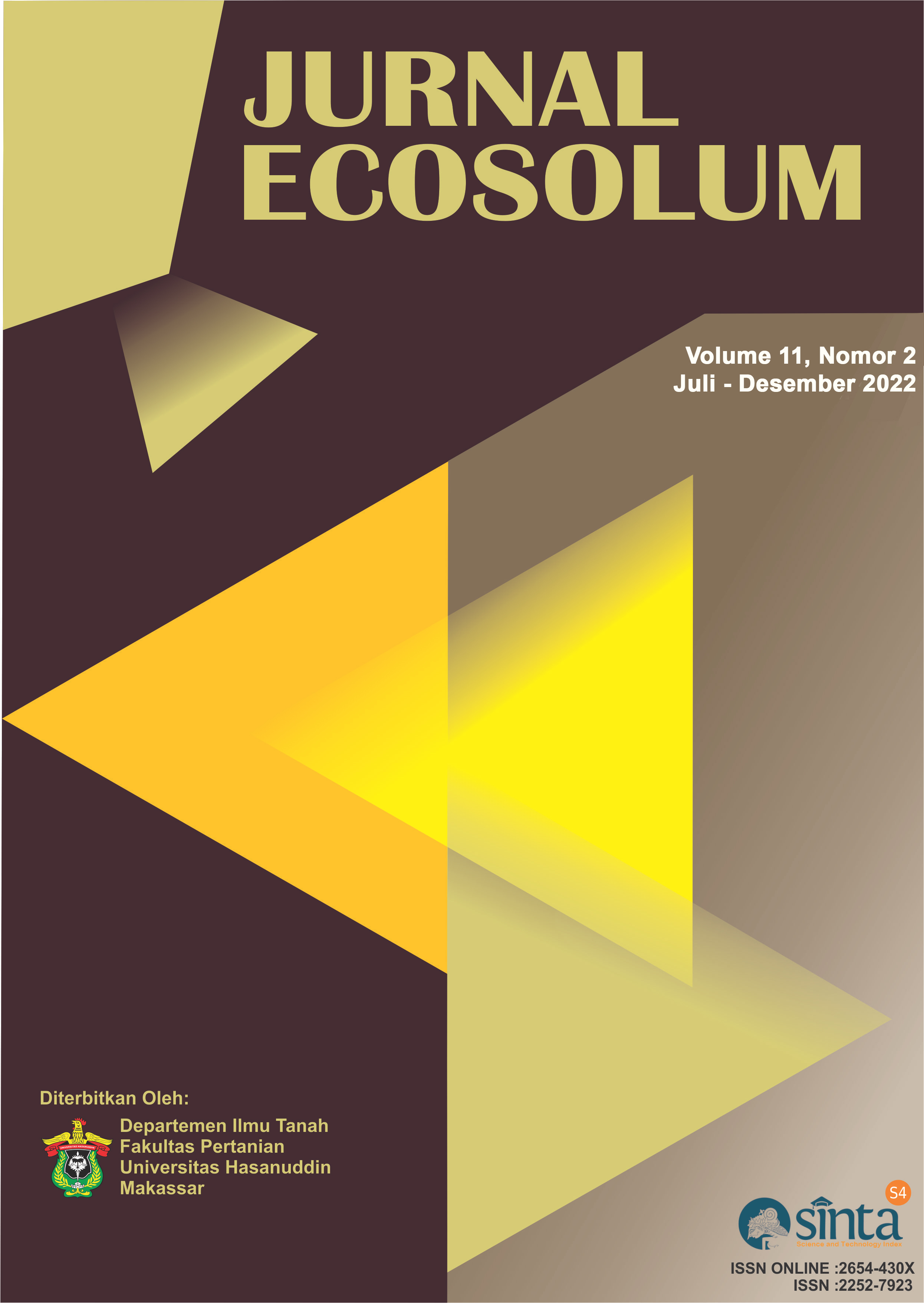Permodelan Spasial Pengendalian Area Terbangun Di Kota Makassar
Spatial Model of Built-Up Area Control in the City of Makassar
DOI:
https://doi.org/10.20956/ecosolum.v11i2.23285Keywords:
Land use, Land use change, Land Change Modeler, LCMAbstract
The need for built-up areas in the City of Makassar has continued to increase in recent years due to the rate of population growth. The reduced availability of land in the center of Makassar City causes the demand for built-up areas to shift to suburban areas. In this shift, there is a process of changing the use of non-built-up land into built-up areas. Reduced use of non-built-up land in suburban areas can cause environmental damage. The aims of this study are: (1) to predict changes in land use in Makassar City until 2034, (2) to develop directions for controlling built-up areas. The method used is visual interpretation (digitize onscreen) to obtain land use maps for 2012 and 2022, the Land Change Modeler (LCM) model to predict land use change in 2034 by comparing two land use scenarios, namely Without Scenario (TS) and Restriction Built-up Area (PAT). Scenarios that are able to reduce the rate of development of built-up areas will be chosen as directions for spatial use until 2034. The results of this study show the same pattern of land use change in the two scenarios used, namely only settlements, built-up land and open land that experience an increase in area during the analysis period. However, this scenario differs in terms of the extent of change. In the TS scenario, settlements increase by 706 ha (34%), built-up land by 272 ha (13%) and open land by 61 ha (3%). This increase reduced the area of paddy fields by 425 ha (20%), mixed gardens by 228 ha (11%), ponds by 222 ha (11%), shrubs by 69 ha (3%), forest by 52 ha (3%) and water bodies by 44 ha. (2%). Whereas in scenario 2, the increase in settlement area is only 265 ha (31%), 114 ha (13%) built-up land and 44 ha (5%) open land, so that the decrease in the area of other land uses is also small, namely rice fields 186 ha (22 %), ponds 109 ha (13%), mixed gardens 88 ha (10%), shrubs 21 ha (2%), ponds 12 ha (1%) and forest 7 ha (1%). The PAT scenario proved to be more effective in restraining the rate of development of built areas so that it was chosen as the direction for controlling built areas in Makassar City until 2034.
Downloads
Published
How to Cite
Issue
Section
License

This work is licensed under a Creative Commons Attribution-NonCommercial 4.0 International License.












